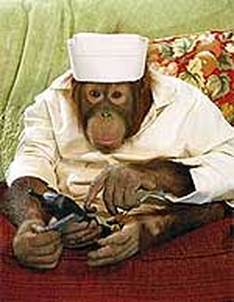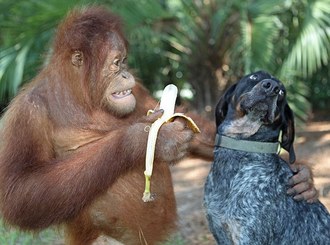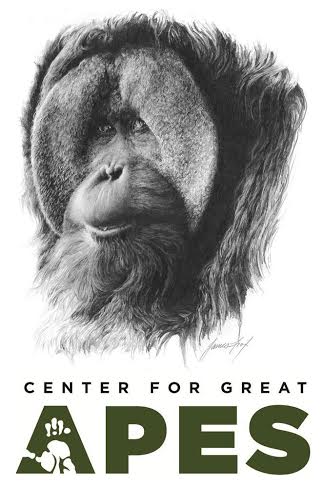
Many people are familiar with the “No Animals Were Harmed”® tag the American Humane Association (AHA) grants to many movies and TV shows. The AHA has exclusive on-set jurisdiction from the Screen Actors Guild to supervise the use of animals in such productions. Unfortunately, while conditions during a video shoot may be monitored, there is no way to know how apes are treated when they are not “working,” and trainers typically use fear and physical discipline to control their apes; the degree of force increases as the apes grow and become more powerful and strong-willed.
Our concern for the well-being of orangutans cannot be limited to their time on-set; we must give consideration to what has happened and will happen to these individuals throughout their lifetimes – from removal from their mothers to their options for post-performance lifetimes.

Similarly, little
attention is paid to the long-term outcome for such orangutans. It is
critical for the public to become aware of what the options are for
performing apes when they are too big and strong to be handled. Because
they have been raised by humans and trained to perform human tricks,
they cannot be readily integrated into an orangutan group – they do not
know how to “be orangutans.” Further, enclosures capable of safely and
humanely housing apes require substantial space and careful adherence to
strict construction standards – the empty shed on zoo grounds, a
chain-link cage in the children’s zoo, or that monkey enclosure from
which the current residents could be moved simply will not contain an
ape. Together, these factors mean that ex-performing apes cannot just be
moved to a zoo or sanctuary after they – inevitably – grow too
dangerous to be handled. Zoos and sanctuaries can neither immediately
place an ex-performer with an existing orangutan group, nor do they
readily have the space or resources to build new enclosures for such
apes. The vast majority of these orangutans are placed back in the
pet/dealer trade and all too often in very inhumane conditions, caged as
breeding stock to produce more infants, or relegated to small,
substandard cages for the remainder of their very long lives (orangutans
can live more than 50 years, but can only be safely handled for the
first 6-8).
 The Center for Great Apes provides a permanent sanctuary for orangutans and chimpanzees who have been retired from the entertainment industry, from research, or who are no longer wanted as pets. The
Center provides care with dignity in a safe, healthy, and enriching
environment for great apes in need of lifetime care, and works hard to
educate the public and the news media about the real story of apes in entertainment.
The Center for Great Apes provides a permanent sanctuary for orangutans and chimpanzees who have been retired from the entertainment industry, from research, or who are no longer wanted as pets. The
Center provides care with dignity in a safe, healthy, and enriching
environment for great apes in need of lifetime care, and works hard to
educate the public and the news media about the real story of apes in entertainment.